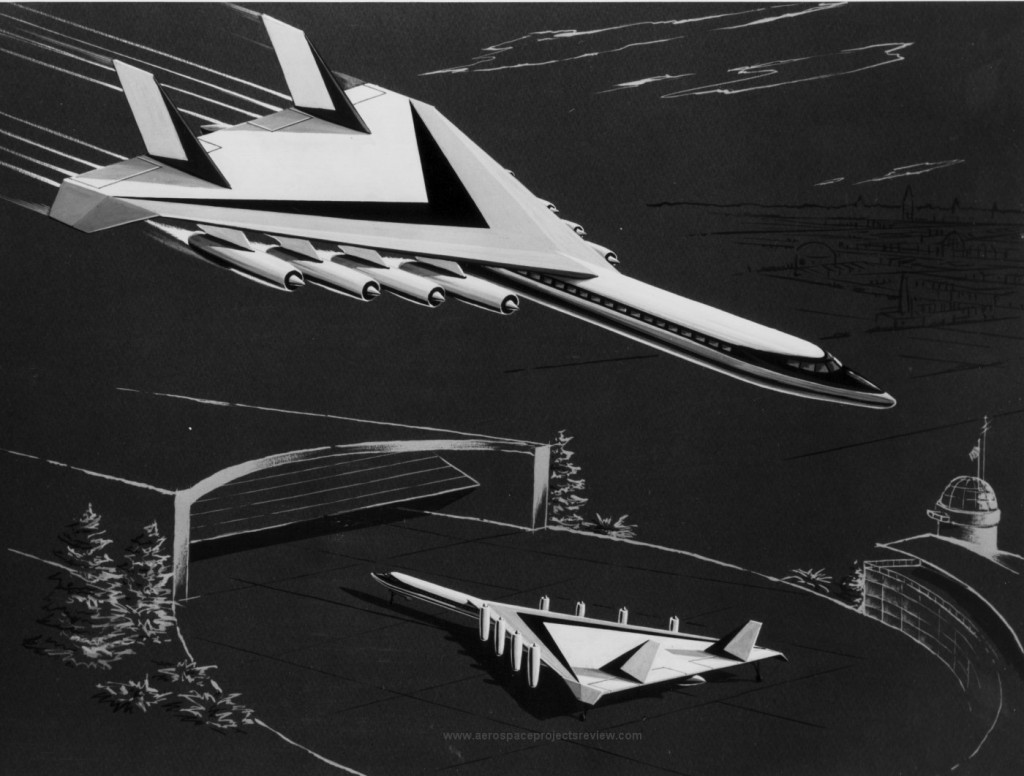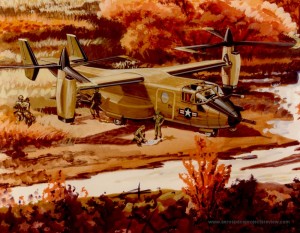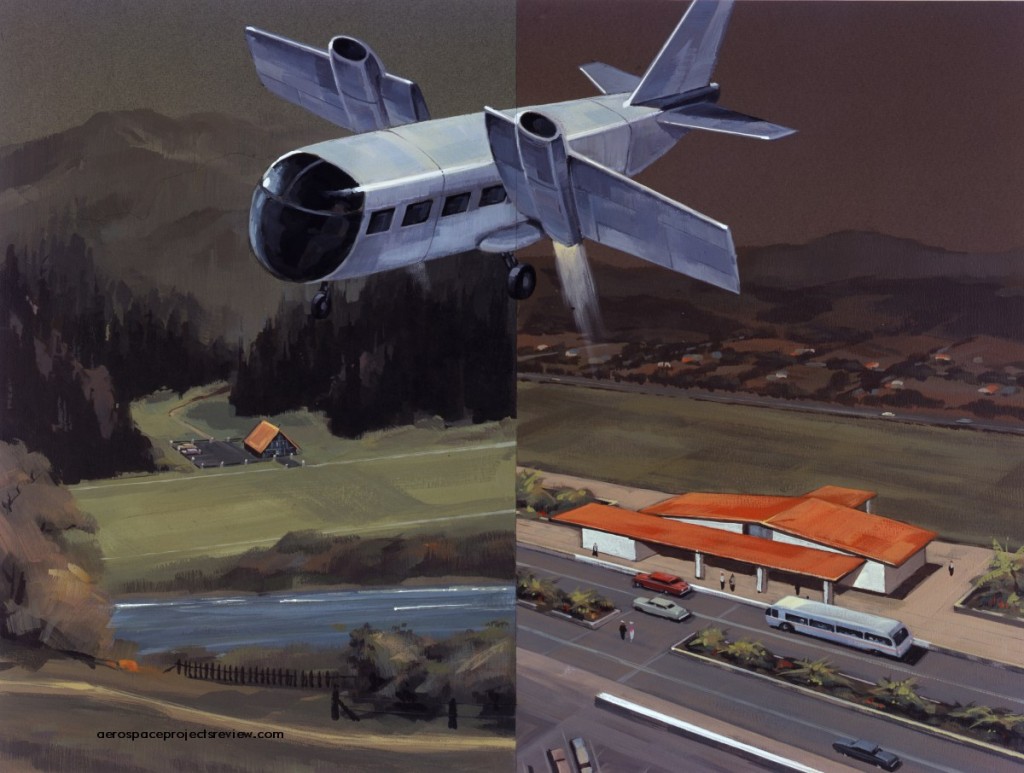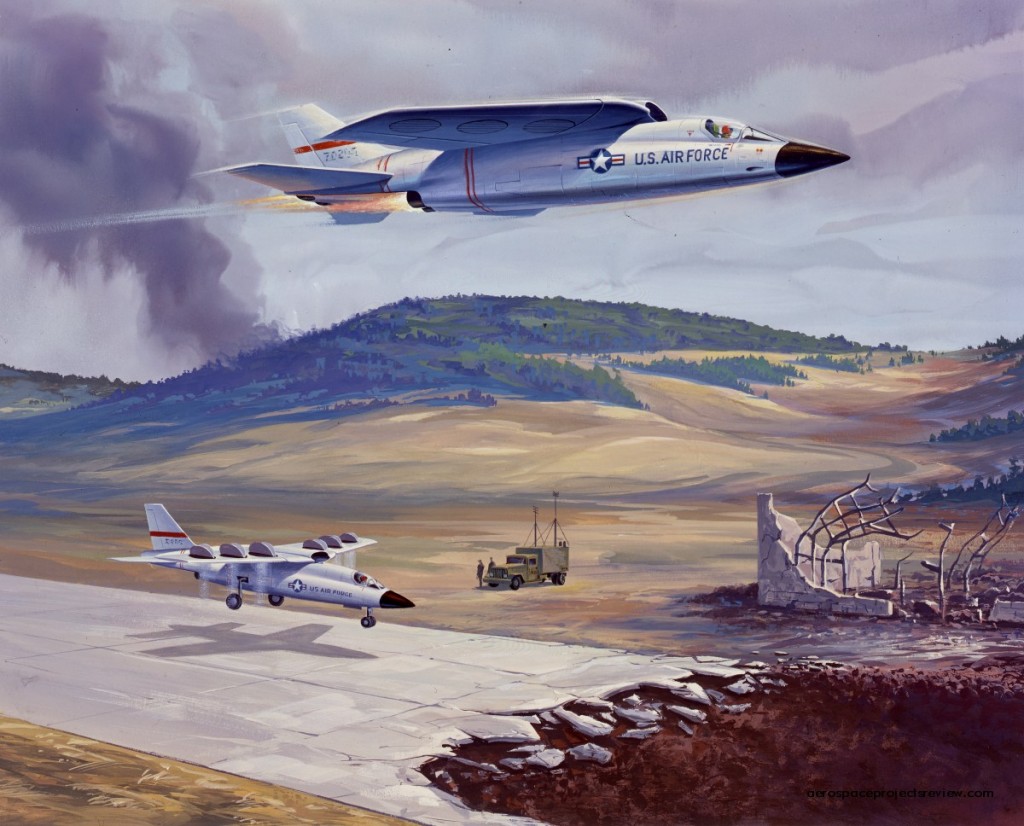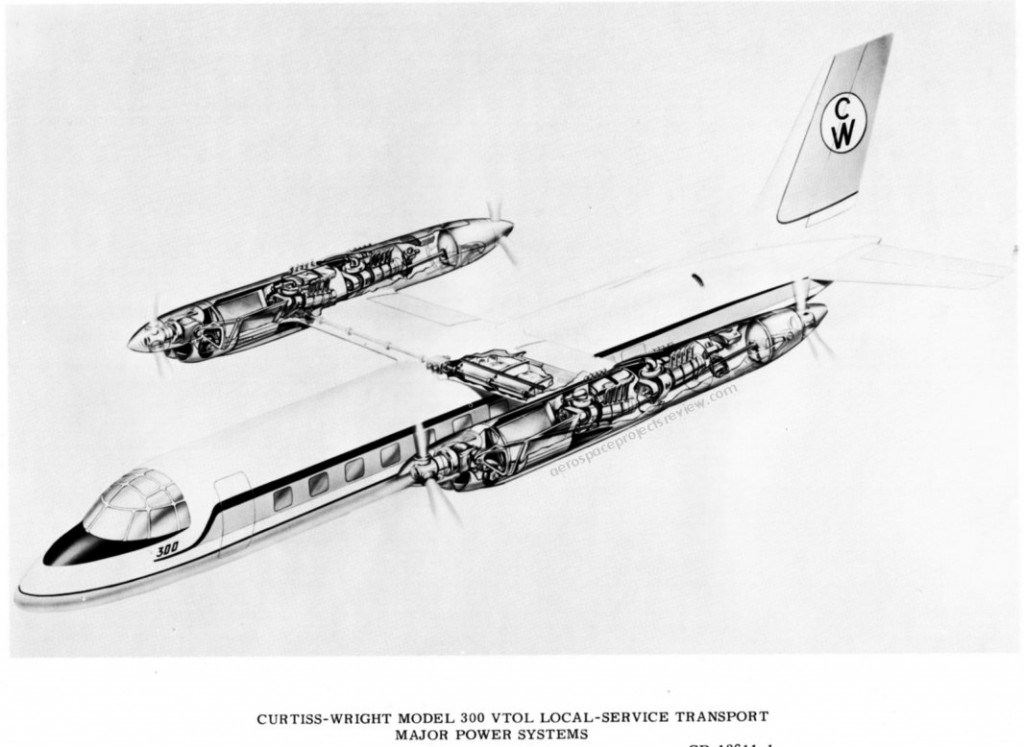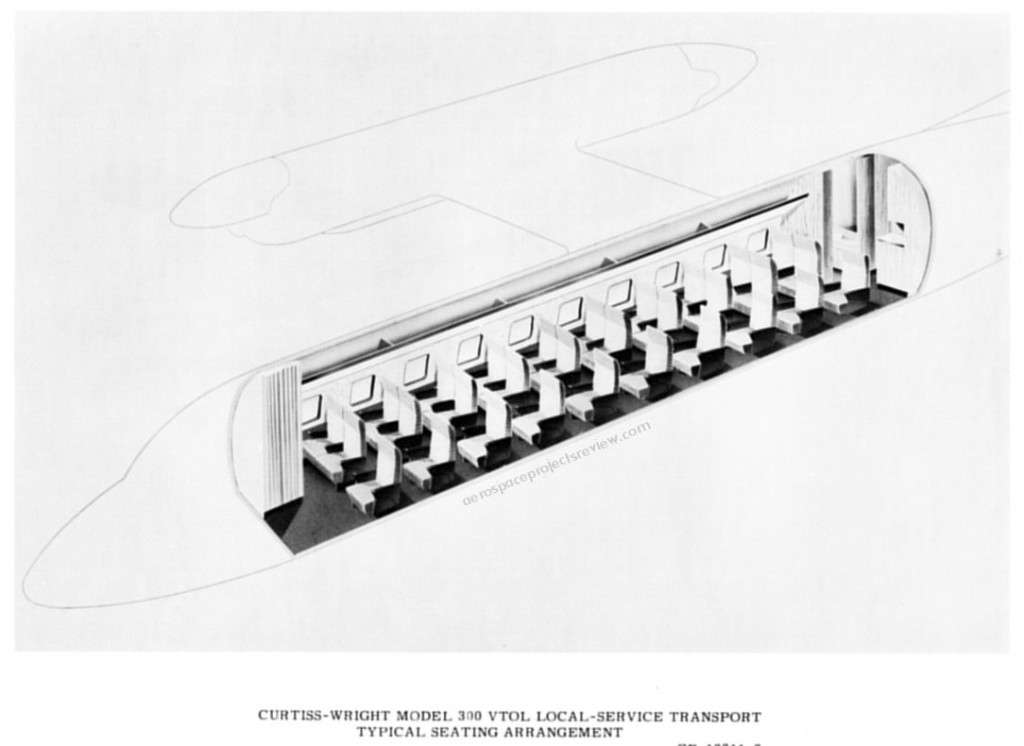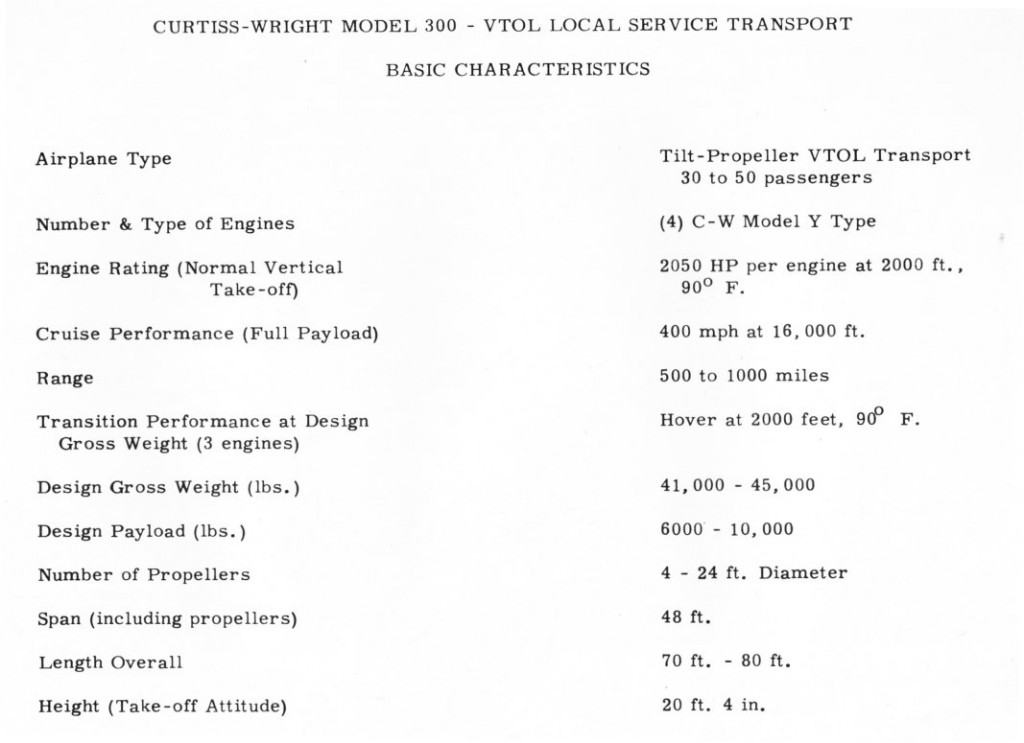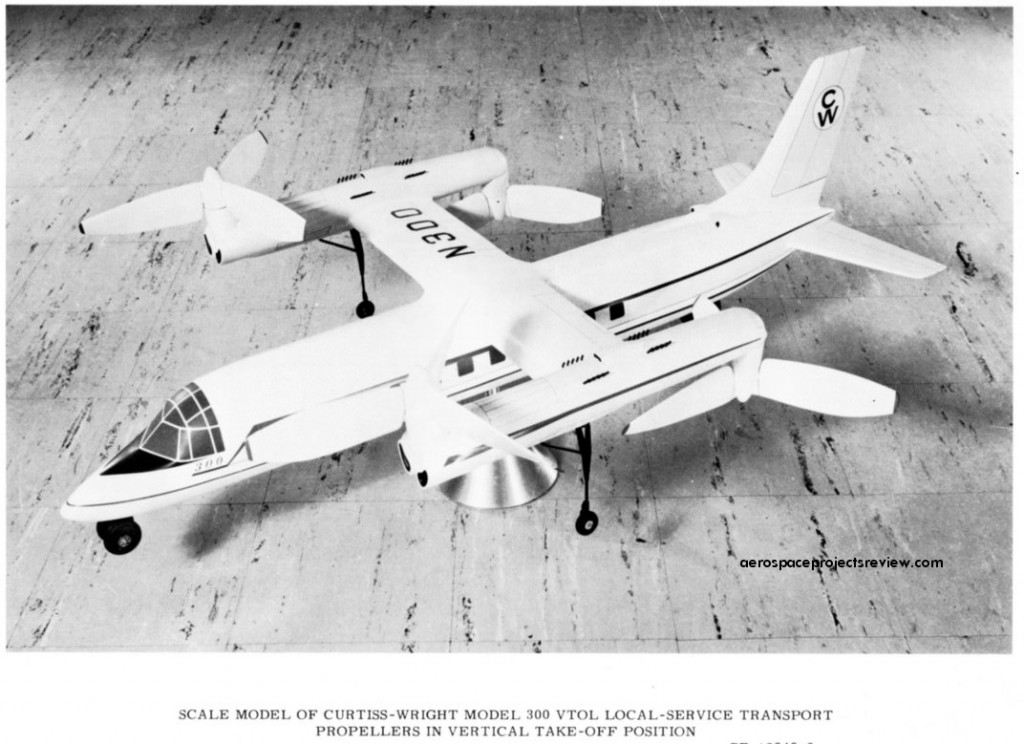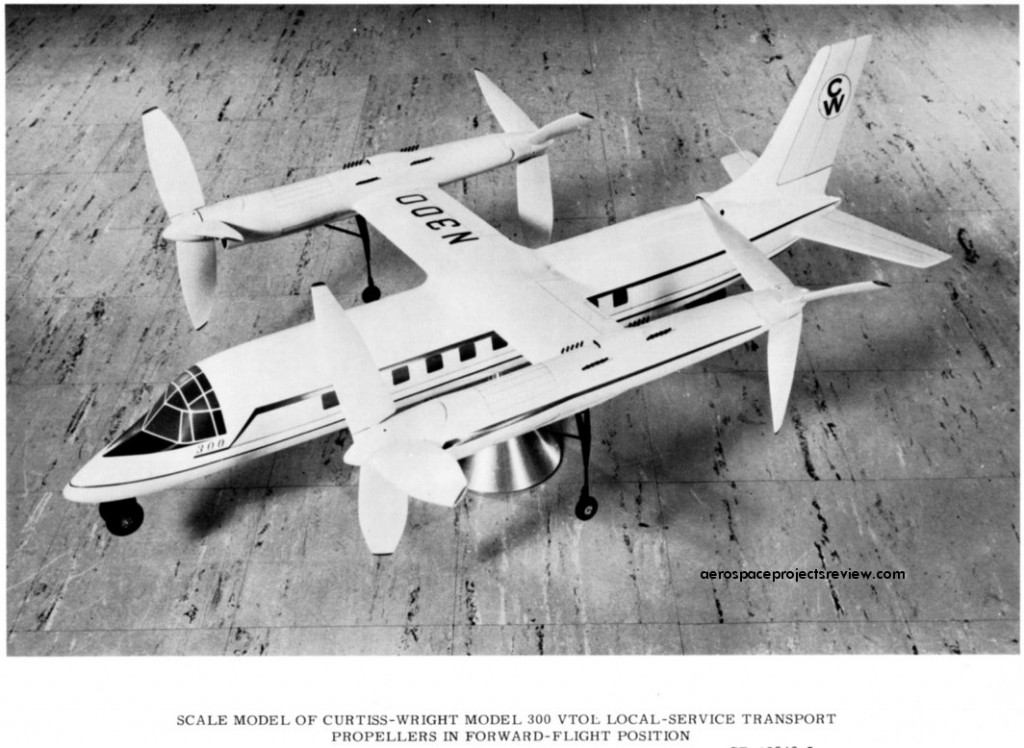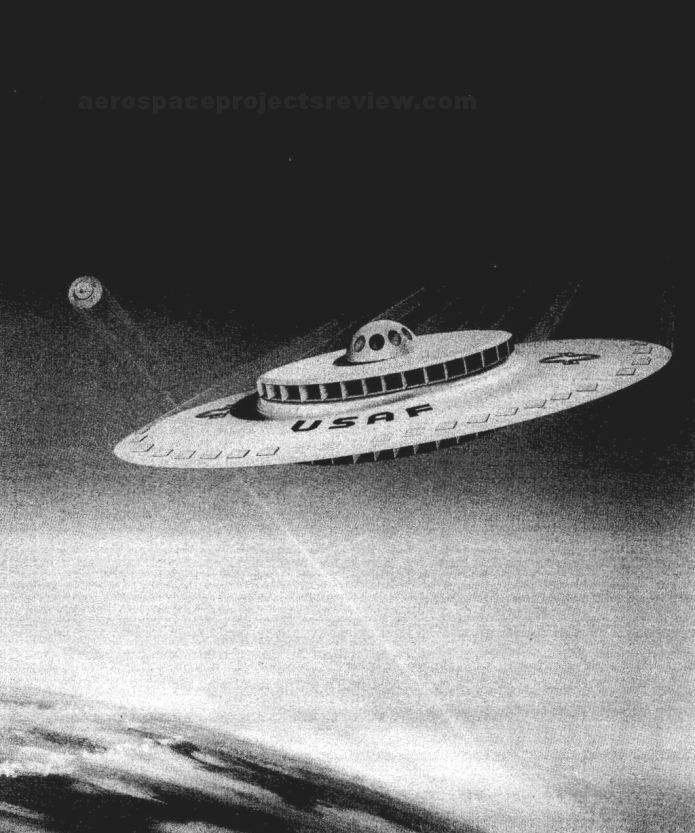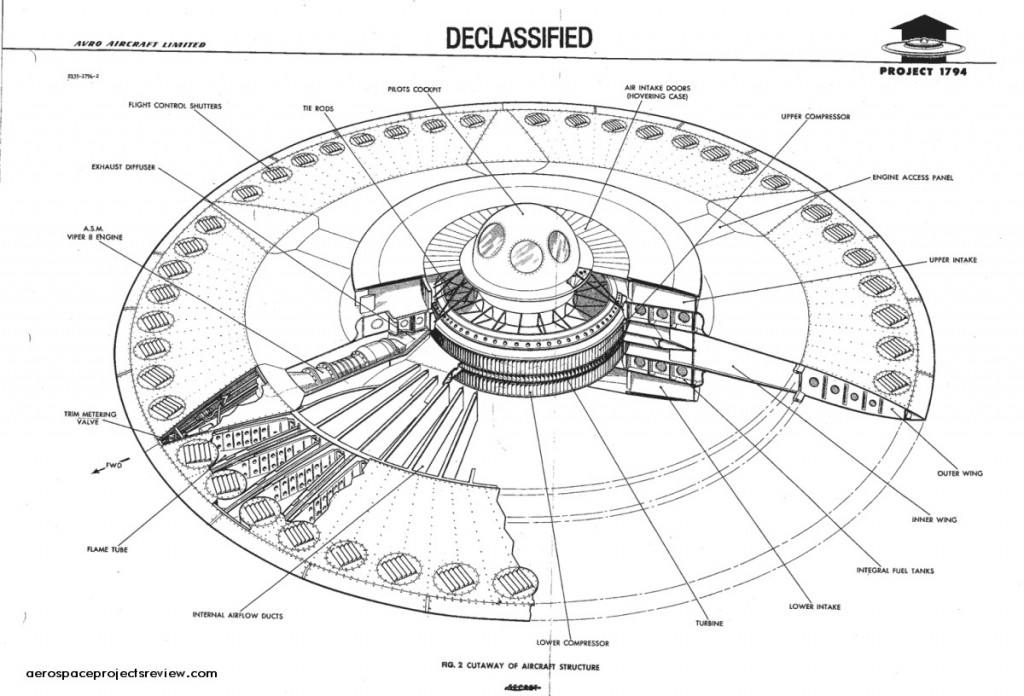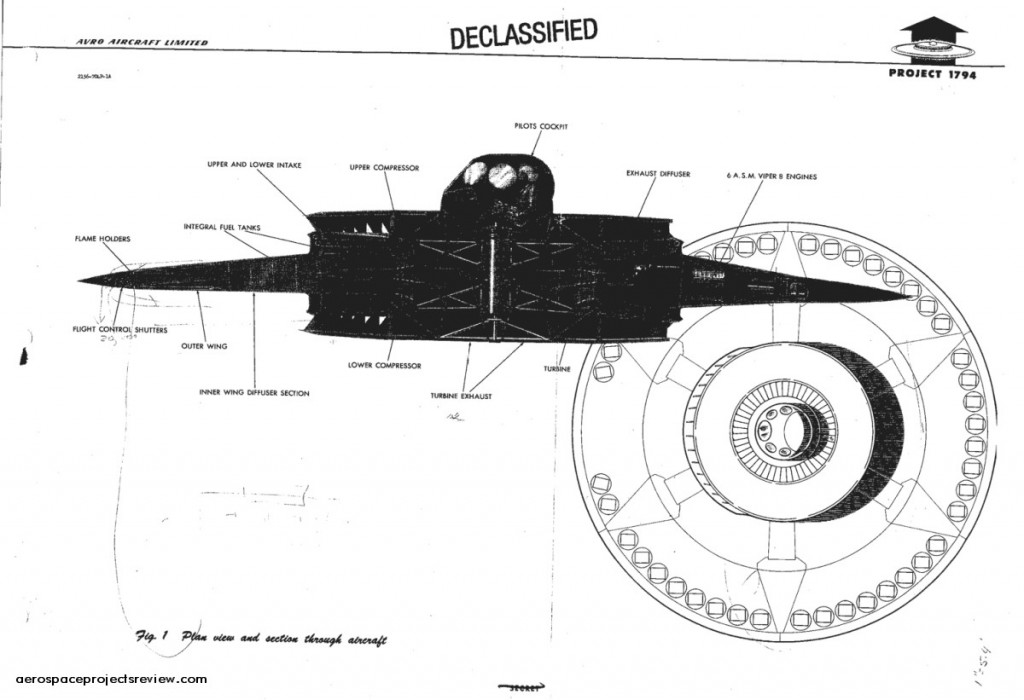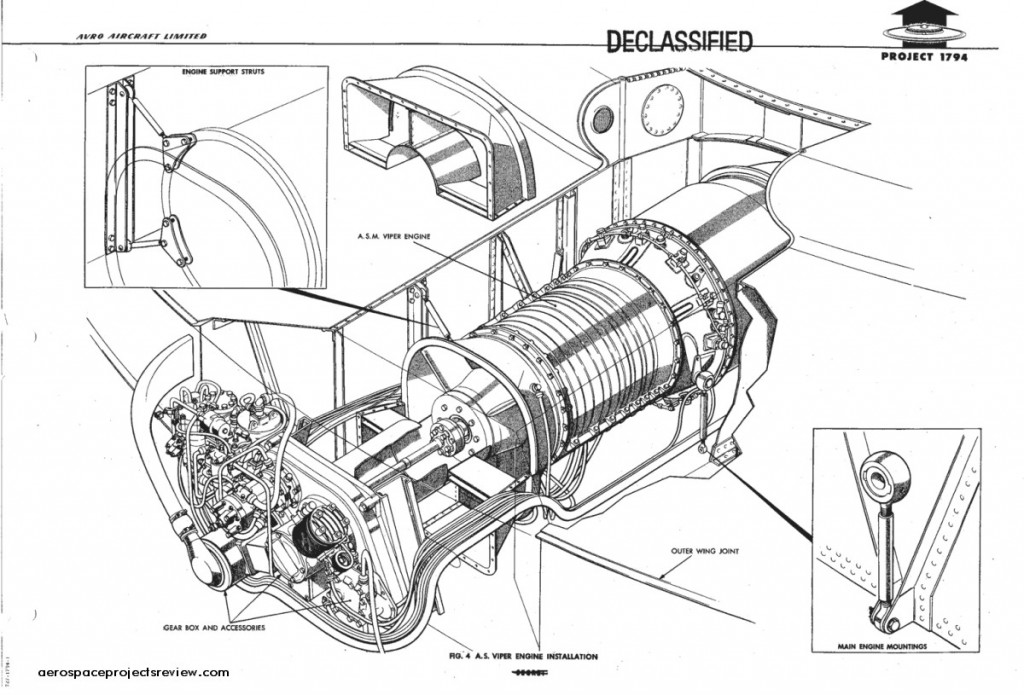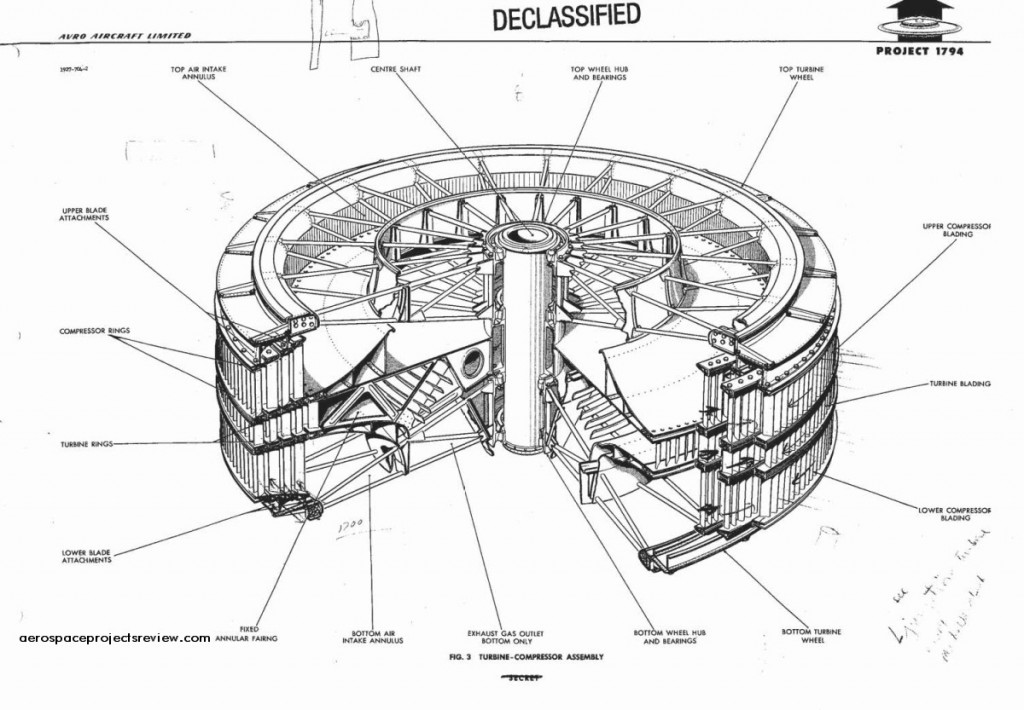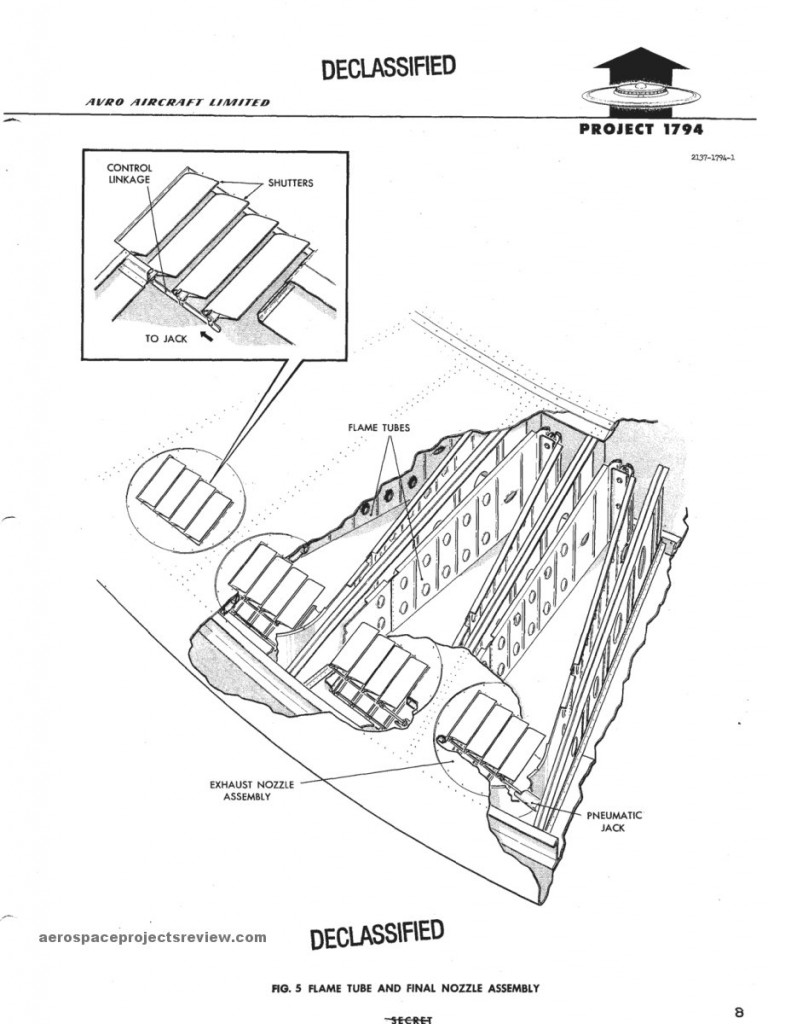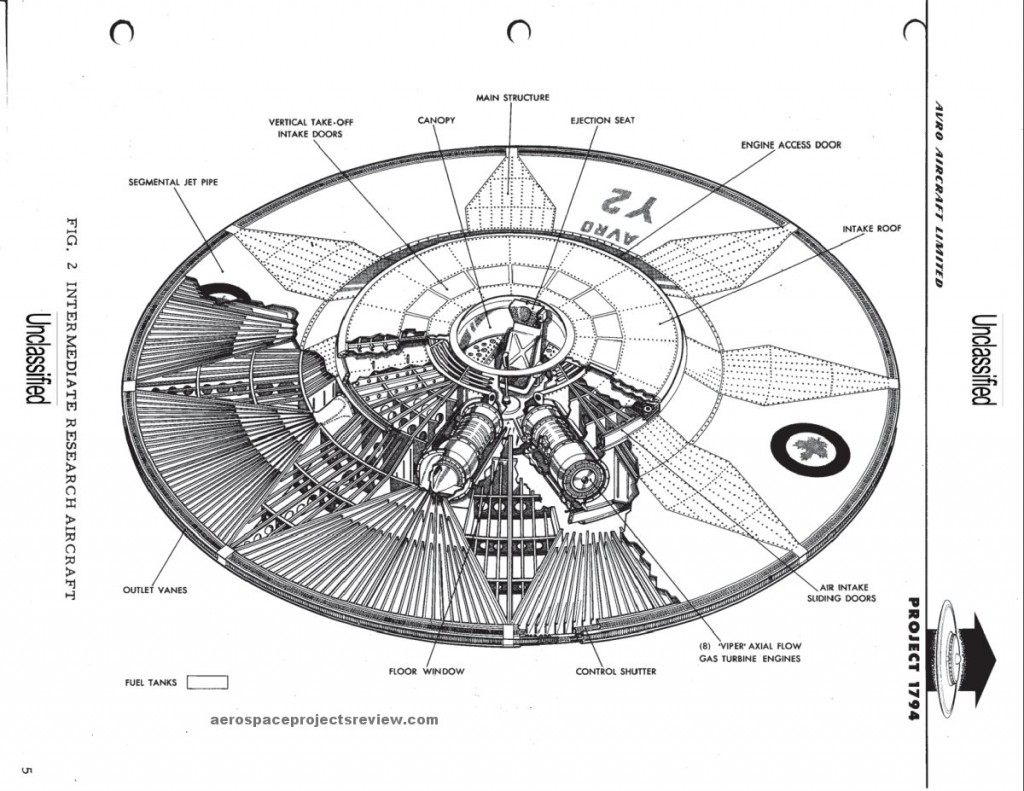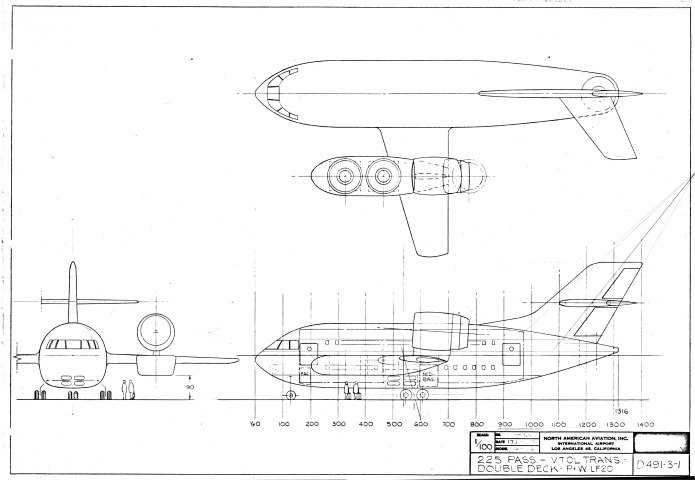A 1960’s concept painting from Bell depicting a vertical takeoff and landing supersonic transport. The eight individually podded turbojet engines were hinged so that they could rotate upwards at least 90 degrees, providing vertical thrust. It’s far from certain that this was an actual engineering effort as opposed to pure artistic marketing. Exactly what benefit there would be in a VTOL SST is anyones guest.
A Lockheed painting of the CL-840, an attack helicopter proposed for the Advanced Aerial Fire Support System contest of 1964-66. This design won, and was built as the AH-56 Cheyenne. Sadly, the design was more advanced than the technologies required to support it, and it was cancelled after only a few prototypes were built.
A piece of North American Aviation promotional artwork depicting a VTOL transport aircraft. It’s not clear if this design was a “real” design, or just artistic license. In either event, it depicts a jet-equipped tilt-wing design with four engines, with the wing pivot point disturbing close to the passenger cabin. It would be an incredibly loud vehicle for the passengers.
It depicts a type of aircraft that the mid 1960’s thought would soon be popular… a VTOL “bus” for relatively short range flights. It is shown here seemingly operating between a transit hub just outside of the suburbs and a very small vertiport in the mountains, presumably near a resort.
A piece of artwork from North American illustrating a vertical takeoff and landing aircraft. This was clearly intended for high speed… not only does it have four turbojet engines for forward thrust, if also have variable sweep wings. The complexity here is that the wings have embedded lift fans, probably driven be high pressure exhaust gas from two or more of the main turbojets. The ductwork would be impressive.
Role is unclear, but it appears to be a fighter or strike-fighter. Indications of weapons bays on the fuselage underside; at least one forward-firing gun. No other data available.
One of the last aircraft proposed by the Curtis-Wright company (early 1960’s), this version of the Model 300 featured a single main wing with wingtip engine pods. Each pod contained to Wankel rotary internal combustion engines; each engine drove a broad-bladed propeller (one at the front of the pod, one at the rear) of the type that had been successfully demonstrated on the Curtis-Wright X-19 VTOL aircraft. In order to attain vertical lift, the forward propeller would tilt up, the aft propeller would tilt down.
At the time, there was considerable interest in fast short-ranged VTOL transport. The idea was that small VTOL aircraft would operate from various small “ports” in and around major cities, flying to and from the nearest major airport (along with other transportation hubs). The VTOL would provide a bus service for the busy businessman on the go, who might need to leave his office in a hurry and catch the next jetliner to, say, London. While no VTOL aircraft such as the Model 300 were built and put into service for this role, several attempts to fill the “VTOL bus” role were attempted with helicopter, but due to noise and cost the concept never caught on.
A few months ago some news sites went buggo with the declassification of several reports on the Avro-Canada Project 1794, a late 1950’s effort to develop a VTOL supersonic “flying saucer.” See, for example, Wired wildly inaccurately titled: “Declassified at Last: Air Force’s Supersonic Flying Saucer Schematics,” which ignores the fact that this design had been declassified fifteen or more years ago… I got a report from the NASM in the mid/late 1990’s, and have seen it online for *years.* Heck, a year or two back I made available some Avro documents on the topic (to thunderous silence, I’ll add).
While a technical masterpiece, it suffered from one minor flaw… it didn’t work. The “Avrocar” test vehicle proved wholly incapable of flight… it could hover in ground effect, and slowly wobble about, but could not generate enough vertical thrust to lurch clear of the ground.
Anyway, a few months back the National Archives declassified a box of reports, the tech blogosphere went nuts, and very little actually got posted online, just retreads of what the National Archives put in a single blog post. So, here’s some more Project 1794 stuff.
The D190 designation was the catch-all for a wide range of tilt-duct vehicles Bell designed in the 1950’s and 1960’s. The D190B was a rescue version, intended to go after downed pilots and the like. Other versions were similar, but designed to mate up with a C-130 in flight; the C-130 would transport the D190 to the vicinity of a rescue and would transport it home again, greatly increasing range and lift capability of the D-190. Another version was designed to similarly mate up with flying command posts and Air Force One, to transfer supplies and personnel.
